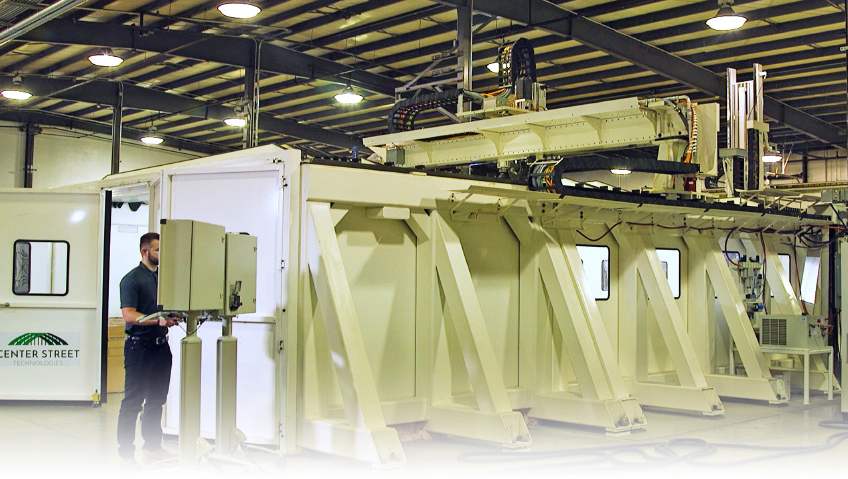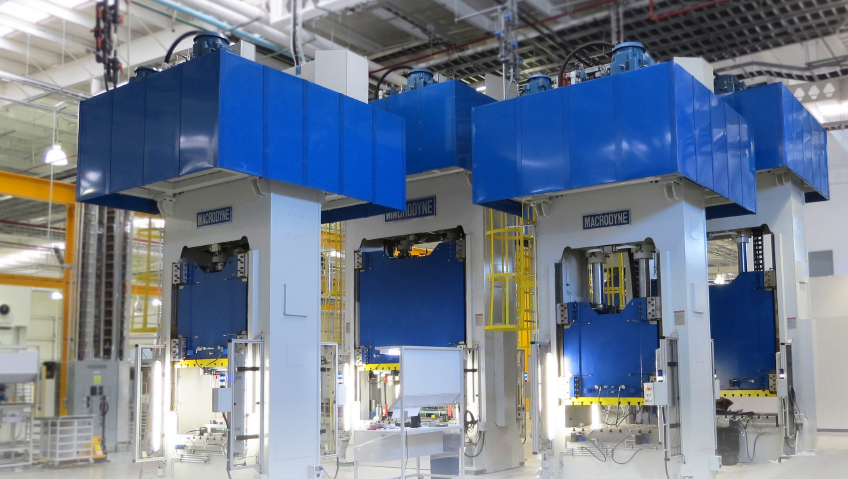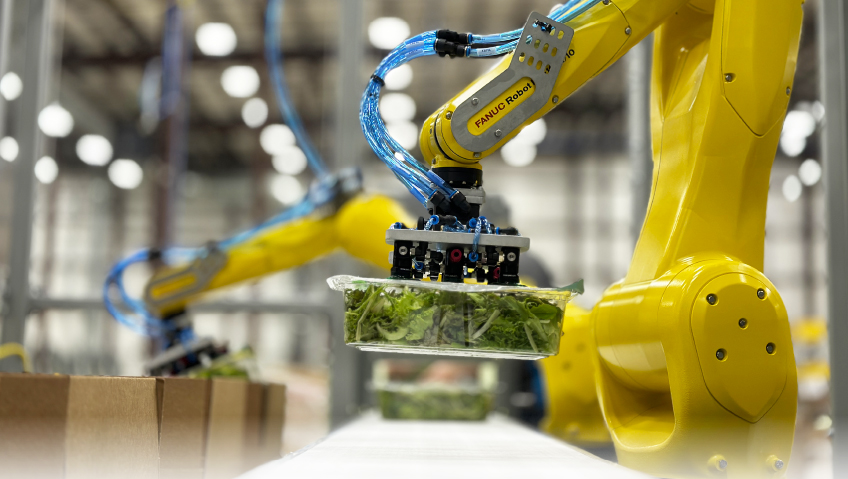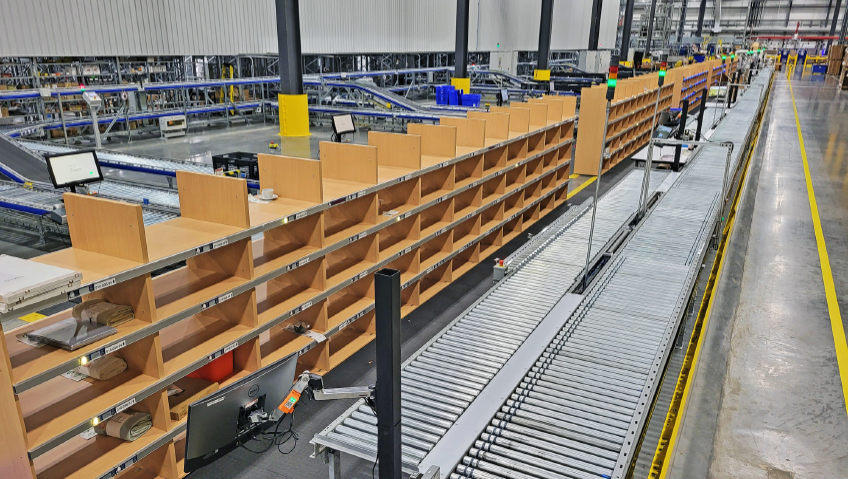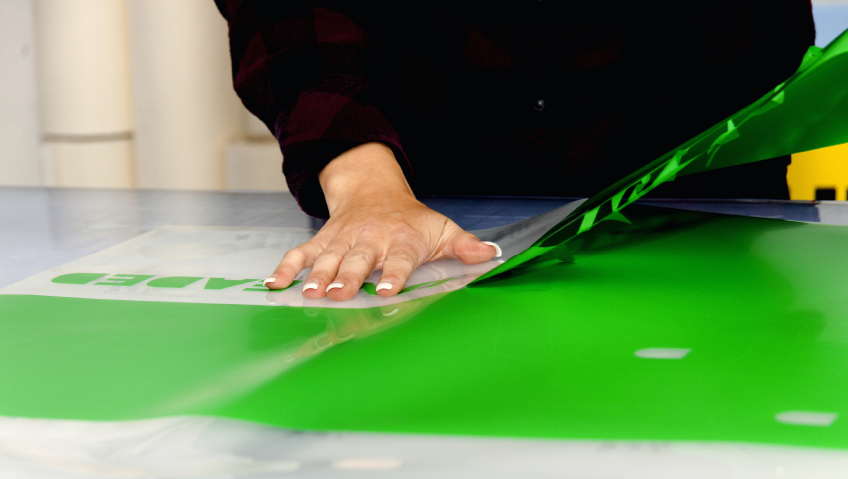Center Street Technologies is a company based in Youngstown, Ohio that is bridging advanced design to manufacturing by leveraging state-of-the-art technologies and innovative manufacturing processes.
With innovation at its core and manufacturing in its DNA, Center Street Technologies brings together leading tools and technologies to promote the design, manufacture, and analysis of large-scale polymer-based structures. It is the predictive nature of the company’s tiered approach that saves time and money while promoting repeatable accuracy on a large scale.
Behemoth builds
A large scale, indeed, as its AMC2304 is a behemoth in the additive manufacturing world. Its nomenclature comes from its build volume as the machine’s envelope is 24 feet by 12 feet by 8 feet, for a total available build volume of 2304 cubic feet.
“This machine allows us to go to a car-level structure, which is different from what the typical 3D printer offers at a polymer level, so there are different advantages. You don’t have to make smaller structures and try to assemble them; you can make a unified structure as big as our build space,” explains Brady Walther, Center Street Technologies’ Chief Technology Officer.
The company’s capabilities are structured to scale projects from their digital environment and test bench to Center Street Technologies’ newest machine, the AMC160, which includes a 4-foot by 8-foot by 5-foot envelope and serves as the core development platform to the AMC2304.
Both machines have extrusion systems capable of printing 150 pounds per hour, but inside the AMC2304 is a dual gantry system that supports both additive manufacturing and subtractive manufacturing with a five-axis machining head and spindle capable of operating at up to 24,000 rpm.
According to Center Street Technologies’ Senior Project Manager Alexander Fitzgerald, “The goal is basically to take this from a small-scale, more experimental environment, where you’re figuring out process parameters, and then scale it up to our medium machine where you’re going to create smaller parts, figure out geometries, and get into a production setup. Then on the big machine, you’re going to be running full production.”
A novel approach
Center Street Technologies places just as much emphasis on the digital manufacturing side as it does on physical manufacturing, which helps to verify concepts and grow confidence in a young tech-enabled sector with only a brief history.
As Fitzgerald explains, “We’re looking to utilize advanced technology and design capabilities and bring them into manufacturing, so we’re looking to use the long history and lineage of manufacturing but apply it using the advanced tools that we have now.”
To produce large-scale polymer-based structures through its additive manufacturing process, Center Street Technologies brings together advanced modeling and simulation, application design and engineering, materials science and engineering, and industrial controls and automation, to offer a truly comprehensive manufacturing solution.
“We’re looking at more of a tip-to-tail approach for manufacturing. So, we’re not looking to just make the part, or just do the analysis; we’re looking to be able to work with the customer, understand the requirements, build the part in a digital environment, validate it, and make sure the part is up to manufacturing spec,” Fitzgerald explains.
Center Street Technologies rounds out its capabilities with a valuable on-site materials lab where samples are produced and tested throughout the production process to ensure that outcomes are to specification and that confidence is well-founded.
“The combination of the advanced tools and capabilities we have on site, plus the workforce we’ve developed here, with years of experience in additive—when you blend all those, you get this cutting-edge technology and pioneering process because of all the pieces coming together,” Fitzgerald says.
Technologies together
Center Street Technologies’ capabilities are supported by collaborative technologies that have been integrated into its equipment and its processes, including Siemens NX software and Grale Technologies’ revolutionary scanning tools.
The Siemens NX software supports the entire lifecycle of a project, offering a unified environment in which the design, analysis, and manufacture can be managed seamlessly without the introduction of errors across platforms.
Walther discusses the role the digital twin plays in the process, saying, “The biggest advantage is being able to predict several different things before you actually run the manufacturing process, which again provides time and cost savings, where we can run a digital simulation utilizing the actual machine in the environment.”
The use of a digital simulation also enables more accurate lead times, scrap rates, production weights, and other data that facilitate more accurate predictions and outcomes.
While Siemens software plays a significant role in the accuracy of the work in the digital environment, Grale Technologies’ three-dimensional geometric scanner is a tool that can be integrated and programmed into Center Street Technologies’ five-axis machining head and is used to scan parts after they are produced to ensure the quality of production.
Measure, measure, measure…
As Chief Scientist for Grale Technologies, Fred Persi notes, “In this case, we’re talking about laser line sensors or laser profilometers, as they are called, which will allow us to see the surface of the part so we can measure geometry quantitatively and qualitatively.”
Fitzgerald notes, this is particularly valuable because “we can validate our parts in the same machine. This allows us to have high confidence that we’re achieving the tolerances required.”
The scanner processes information in real time and can collect millions of data points per second, which Center Street Technologies uses to analyze the project. This enables adjustments to be made proactively rather than reactively, which improves manufacturing efficiency as well as repeatability.
“They want to know when they are working on a part that it’s being held down by the vacuum. When they take it off the vacuum, they want to know how much it relaxes when that happens,” says Persi, noting that this is characteristic of plastic material properties.
“It can be difficult to control plastic. They need to know, ‘Did it go where we thought it went? How thick are these beads? Are they really what we think they are? Are the surfaces as thick as they should be, because we need to machine them?’ Those are the types of questions that they need very quick answers to, and that are very difficult and time-consuming to get in other ways,” he says.
Data-enabled quality
The tiered approach taken by Center Street Technologies and its collection of real-time data ensures that quality assurance is introduced into the process early on, a trend Persi identified as becoming more common in the manufacturing world.
“There’s a push that we see from people to move the quality control further upstream. So, instead of making a part, taking it out of the machine, and sending it to the metrology lab and measuring it there, they want to measure it closer to the machining process, or even during the machining process.”
While there is no intention to replace the metrology lab, by incorporating metrology directly into the machine, Center Street Technologies can “get to quality quicker,” as Persi says.
Walther highlights other advantages: “It allows for a lot of savings that most people don’t think about. It’s cheaper in terms of materials, lightweighting the part, and reducing the assemblies down to a few or single components—this allows for more efficient use of the tools, production, and assembly. So there’s a lot of time savings, cost savings, and the ability to have that validation beforehand, so it’s not a trial-and-error process.”
This offers a high rate of repeatability and shows enormous potential for the scalability of additive manufacturing, which means the applications and use cases where it is of value will only continue to grow.
Manufacturing’s future
Additive manufacturing is without question part of the future of manufacturing. From tooling and artifacts to aircraft fuselages, the opportunities are endless, particularly where large-scale polymer parts play, including automotive, mining, aerospace, construction, and oil and gas.
“Some of the best use cases most likely are the ones that have not been designed yet, where you utilize the full manufacturing breadth of the process,” says Walther. “Then you can utilize the full power and see the full power of it. If you design while you manufacture, those constraints are built into our platform so that we don’t design something outside of the capability of the machine.”
As technology and material capabilities continue to be developed and expanded, the greater functionality additive manufacturing offers will expand the niche it occupies in the market, that of the manufacturing of complex shapes and geometries with speed, efficiency, and cost savings, and will have a major impact on manufacturers’ bottom lines.
“As the world evolves and these technologies become more ubiquitous, with people making more complicated parts, we see this as a necessary technology to get there,” concludes Walther. Hence Center Street Technologies’ role in facilitating the greater adoption of large-scale additive manufacturing.
The goal is to continue to bridge digital and physical manufacturing environments by integrating advanced technologies and cutting-edge manufacturing processes to elevate what additive manufacturing is capable of.

